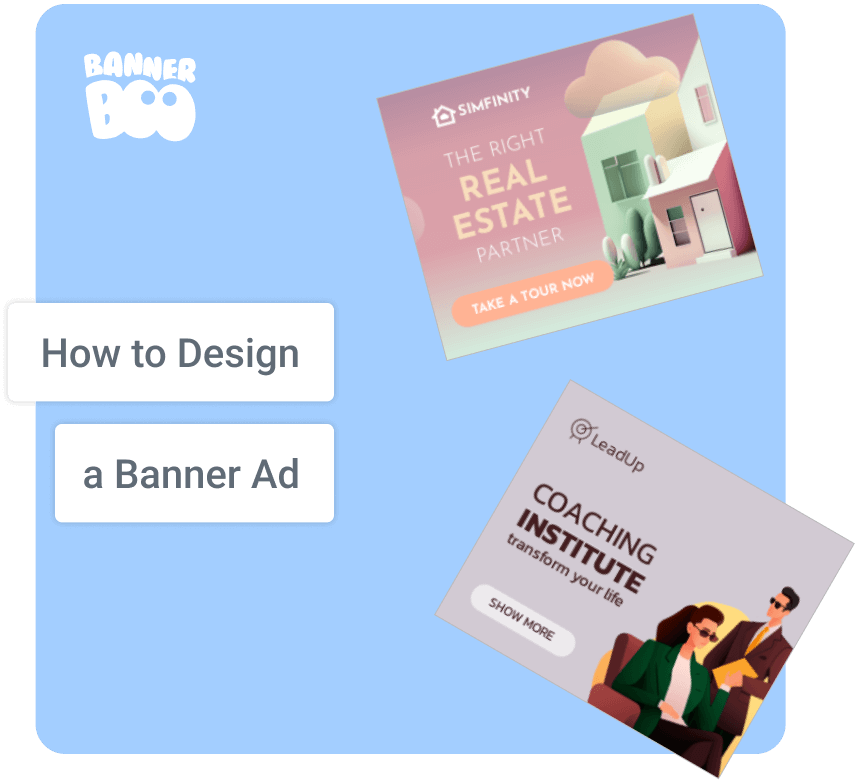In today's world of digital advertising, banners remain one of the most effective tools for capturing attention, building brand awareness, and driving user actions. However, a great design alone isn’t enough for banner advertising to work. Many factors need to be considered, from campaign goals to post-launch optimization.
In this article, we offer a structured approach to designing banner ads. You'll learn about the key stages of the process, recommendations for each step, and important details that will help you maximize the impact of your efforts.
1. Defining goal and KPIs
Every successful advertising campaign starts with a clearly defined goal. This ensures that all subsequent steps are properly aligned.
Recommendations:
- Define the primary goal of your banner ad campaign:
- Increasing brand awareness;
- Lead generation;
- Driving website traffic;
- Boosting conversions.
- Set key performance indicators (KPIs). These may include metrics such as CTR (click-through rate), CPC (cost per click), conversion rate, or ROI (return on investment). It's crucial that your KPIs align with your primary goal.
- Set realistic KPI values. For example, CTR > 1%, CPC < $1, conversion rate > 5%.
- Align your goal with audience needs. Understand what your target audience expects and adjust your goal accordingly.
- Segment goals across different platforms. For example, LinkedIn campaigns may focus on B2B lead generation, while Meta (Facebook & Instagram) is better suited for reaching a broader audience.
Tip: Your goal and KPIs should be SMART — Specific, Measurable, Attainable, Relevant, and Time-bound.
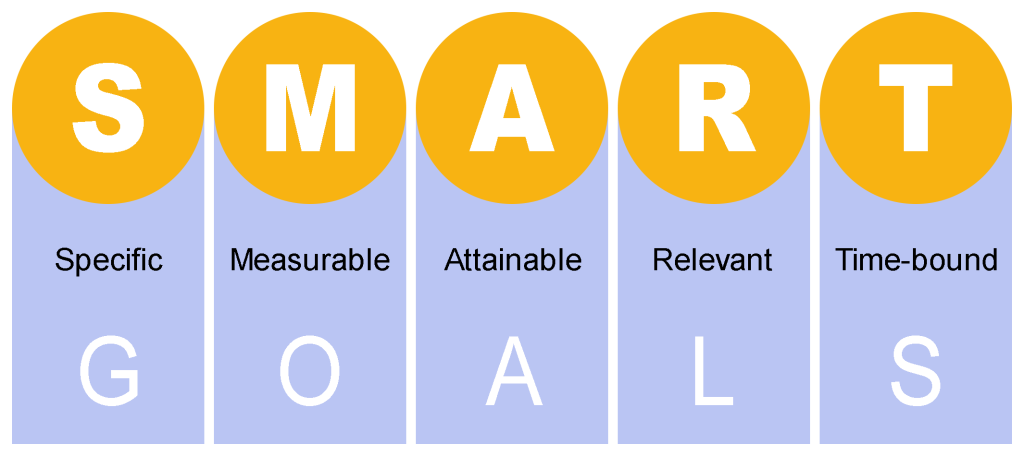
2. Target audience analysis
Understanding your target audience’s needs and behavior allows you to create relevant ads that truly capture their interest. The more precisely you define your audience, the higher the chances your banner ads will be effective.
Recommendations:
- Research your target audience. Use analytics tools like Google Analytics, Meta Insights, or LinkedIn Audience Manager to gather and analyze data.
- Segment your audience. Divide them based on age, gender, location, interests, and other key factors.
- Identify audience needs and pain points. What challenges do they face? How can your product or service help them?
- Consider the context. For example, B2B audiences respond better to a professional and formal approach, whereas B2C audiences are more engaged by emotional and visually appealing banner ads.
- Analyze your competitors' ads. Study their formats and messaging to identify opportunities for improving your own banner advertising campaigns.
Tip: Go beyond basic segmentation by creating buyer personas (generalized representations of your ideal customers), including key characteristics, interests, behaviors, and purchasing habits. This will allow you to not just target segments, but to create personalized ad messages that work better.
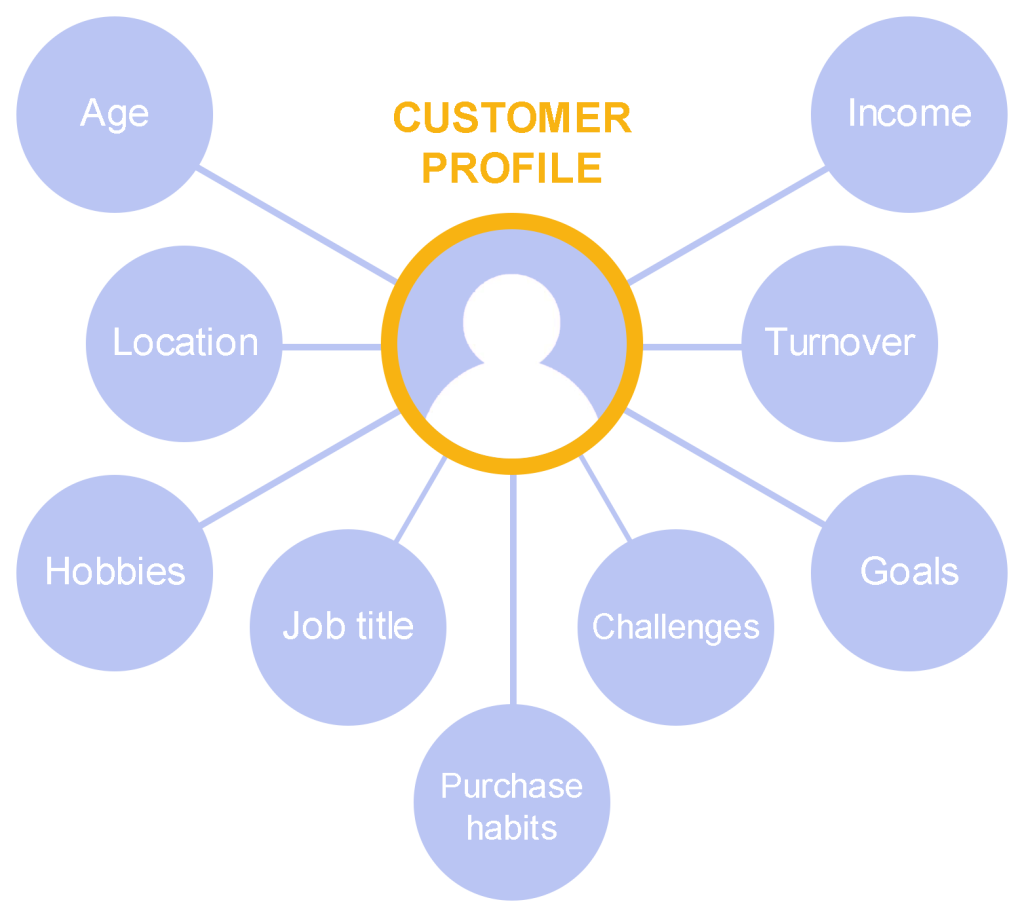
* Customer profile with key characteristics
To make banner advertising effective, choose the right placement and format. Your ad channels should align with your campaign goals and target audience.
Recommendations:
- Choose the right channels:
-
Google Display Network (GDN) or programmatic platforms help reach a broad audience on popular websites;
-
Social media like Meta (Facebook, Instagram) or X (Twitter) work well for campaigns aimed at user engagement;
-
LinkedIn Ads or native ads in professional online publications are more effective for attracting B2B clients;
-
If your audience consumes a lot of video content, consider YouTube Ads or TikTok Ads;
-
Email can also be an effective channel for placing banner ads, especially for B2B audiences and loyal customers.
- Think through the format of banner ads. The overall choice of format should meet not only the platform requirements, but also the level of audience engagement: static banner ads are suitable for quickly conveying information, animated ones are suitable for creating a more dynamic advertising message and attracting attention. The most common banner ad formats are JPEG, PNG, GIF, HTML5, MP4.
- Consider the size of banner ads. Each platform has its own size requirements. The most common banner ad sizes are: Medium Rectangle (300x250), Leaderboard (728x90), Wide Skyscraper (160x600). Adapt banner ads for mobile devices (e.g. 320x50).
- Use a multi-format approach. The same message, adapted to different sizes and platforms, will ensure a unified visual perception.
Tip: Align your ad placement strategy with the sales funnel stages. For example, for the top of the funnel (TOFU), use channels for broad audience reach; for the middle level (MOFU) — retargeting, email advertising, native advertising; for the bottom level (BOFU) — personalized offers in programmatic, remarketing on social media and email. This will help to allocate budget effectively and improve conversion rates.
4. Banner ad concept development and copywriting
The concept and copy of a banner ad determine its ability to grab attention and drive action. Even the most visually appealing design won’t deliver results without a clear message.
Recommendations:
- Focus on benefits. Craft a short message that directly answers the question: "Why is this interesting or useful for the audience?".
Example: "Save 50% of your time on banner ad creation!"
- CTA (call-to-action). A clear and visible CTA is the main driver of clicks. Use action-oriented verbs, for example: "Learn more", "Order now", "Start for free".
- Keep it concise. Avoid overloading. Banner ad copy should be short and memorable, as banners are advertising in a limited space.
- Adapt to your audience. Consider how your audience perceives your product’s value. For example, if your target audience consists of young entrepreneurs or startups, focus on innovation, flexibility, and fast implementation.
- Follow ad placement policies. Ensure that your banner ad concept complies with the policies and guidelines of your chosen platform.
Tip: Create a creative brief. A well-structured brief serves as a guideline for your team, ensuring a unified vision and efficient project execution.
5. Banner design
Even the best copy won’t capture attention without a visual design that meets today’s market standards.
Recommendations:
- Simplicity and minimalism. Banner ads should deliver the core message quickly. Avoid overloading with text or images.
- Visual hierarchy:
-
The headline is the most prominent element;
-
Images or icons emphasize the text;
-
A call-to-action button is usually highlighted by color or placement.
- Brand consistency. Use your logo, brand colors, fonts, and design elements to reinforce brand recognition.
- Contrast. Bright contrast between text and background helps readability. Make sure the font size is easy to read.
- Animation. Use smooth animations to grab attention, but avoid distracting users from the core message. Make sure there's enough time for the user to read your message.
- Mobile-First strategy. Test, how your banners appear on mobile devices, as a significant portion of traffic now comes from mobile users.
Why it matters? If a banner looks sloppy or overloaded with information, users are likely to ignore it. Visual appeal and simplicity are key to standing out in a crowded ad space.

* source allbirds.com
6. Checking compliance with specifications and technical requirements
Ad platforms may reject banner ads if they don’t meet their requirements, so a compliance check is a crucial step.
Recommendations:
-
Check the dimensions of the banner ad;
-
Ensure your banner ad format is supported by the selected platform;
-
Follow file size limits;
-
Optimize images by compressing them without significant quality loss to ensure fast loading times;
-
Test how your banner ad displays across different devices and browsers;
-
Check the functionality of interactive elements (e.g., ensure the CTA button works properly);
-
Ensure the banner ad complies with platform policies.
Tip: Create a checklist and always use it to catch and fix issues early. Example: Checklist for checking banner ad compliance (DOC) (PDF)
7. A/B testing
A/B testing helps identify the most effective banner ad, improving campaign performance based on real data.
Recommendations:
- What to test:
-
Headlines (e.g., "Cut costs" vs. "Increase profits");
-
Call-to-action ("Learn more" vs. "Get offer");
-
Color schemes (bright CTA vs. neutral);
-
Images (people vs. illustrations);
-
Element placement (CTA at the top vs. CTA at the bottom of the ad).
- How to conduct testing:
-
Run two versions simultaneously with the same budget, targeting, and show time;
-
Test only one variable at a time to get accurate results;
-
Consider context. The same banner ad may perform differently across networks, so test formats separately for each platform;
-
Evaluate results based on key performance indicators (CTR, conversion rate, etc.).
- Test duration. Set a minimum testing period (e.g., 7 days) to obtain reliable results.
Tip: Don’t stop at just one test. Regularly analyze new hypotheses, combine the most effective elements from previous tests, and adapt your ads to changes in audience behavior and the competitive environment.
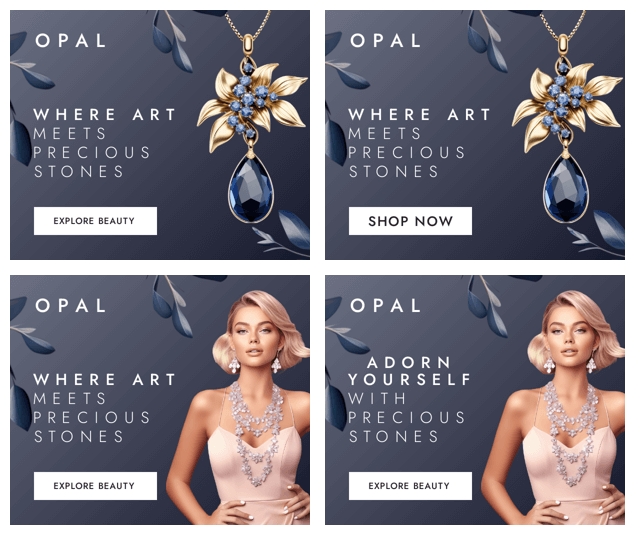
* A/B testing using the Jewelry template from BannerBoo as an example
8. Automation of the creation process and scaling
Marketers and digital agencies often manage multi-platform ad campaigns that require dozens or even hundreds of banner ads in different sizes and formats. Using specialized automation tools can significantly streamline and accelerate this process, reduce costs, and avoid errors.
Recommendations:
- Universal platforms. Use platforms like BannerBoo that automate banner creation and editing. This is especially useful for large campaigns that require working with multiple formats and sizes.
- Banner ad templates:
-
Create basic banner templates for your brand that follow to design guidelines and can be easily adapted for different campaigns;
-
Create versions tailored to different audience segments (e.g., B2B clients vs. end consumers).
- Campaign scaling:
-
The universal platform functionality allows you to automatically generate banner ads of different sizes, adapted to the specifications of different platforms. This enables you to create one design and resize it effortlessly;
-
Add personalization during the scaling process, such as adjusting messaging based on region or audience segment.
Why it matters? Automation reduces workload, allowing teams to focus on strategic aspects of the campaign. In addition, it also allows to quickly adapt banner ads for different platforms and requirements.
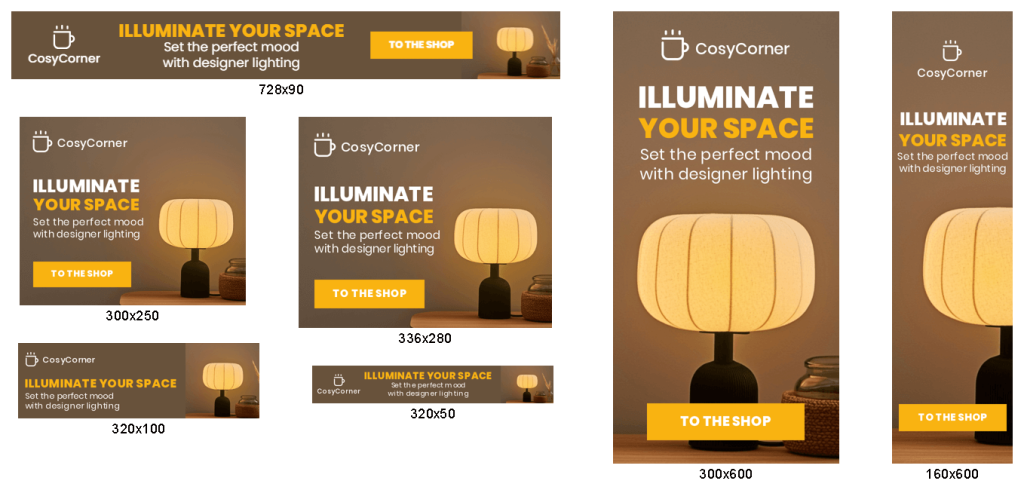
* Multi-format set of banner ads using the Retail template from BannerBoo as an example
9. Campaign launch and monitoring
Launching an ad campaign is just the start. To know if it’s working, you need to track its performance.
Recommendations:
- Performance tracking:
-
Add UTM tags to all banner ads to track performance in Google Analytics or other analytics platforms;
-
Use key performance indicators such as CTR, CPC, conversion rate, etc.
- Real-time monitoring:
-
Use platforms with real-time analytics to respond instantly to changes;
-
Track top-performing platforms and formats to reallocate the budget.
- Working with audiences:
-
Set up remarketing for users who interacted with your banner ads but didn't complete the target action;
-
Use lookalike audiences to attract new customers.
Why it matters? You need to be prepared for the fact that the result may change depending on time, changes in audience sentiment, or other external factors. Only constant monitoring allows you to quickly respond to problems and adjust the campaign to achieve maximum results.
10. Optimization and continuous analysis
Campaigns are rarely perfect on the first try. Optimizing based on collected data helps increase ROI and ensures better results for future campaigns.
Recommendations:
- Performance evaluation:
-
Analyze test data to identify the best-performing banner ads (e.g., those with the highest CTR);
-
Assess ROI — Does the campaign justify the resources spent?
- Campaign adjustments:
-
Reallocate budget between the most effective ad groups or formats for maximum results;
-
If CTR is low, test new headlines, CTAs, color schemes, or even adjust the target audience based on insights;
-
If conversions are not being achieved, check the relevance of the landing page to which the banner ad leads.
- Documenting results. Write down all findings (which options work best) to create an "idea bank" for future campaigns.
Example: Ad Campaign Dashboard.xlsx.
Why it matters? Banner ad performance varies across platforms and audience segments, so it’s important to constantly analyze their performance and make necessary changes. Optimization should be an ongoing process.
Conclusion
Designing banner ads is a complex process that includes a number of important stages: from defining the goal and audience to testing and continuous analysis of results. Each step is important and has a significance for your advertising to be effective and bring the desired result.
The key point is not only creating an attractive banner design, but also the ability to set up the right process for monitoring and optimizing the entire campaign. Automation, A/B testing, constant adjustment — this is what allows you to achieve high results with limited budgets and time.
Remember, the success of your banner ad campaign depends on careful attention to every detail. With a structured approach, you can create banner ads that grab attention and deliver real results.
So don't be afraid to test, analyze, and constantly optimize — this way you can ensure maximum effectiveness of your advertising!
